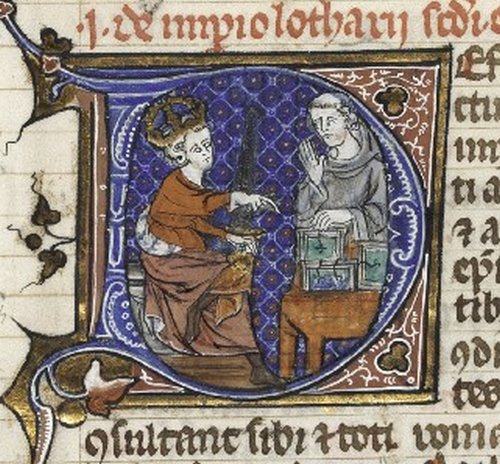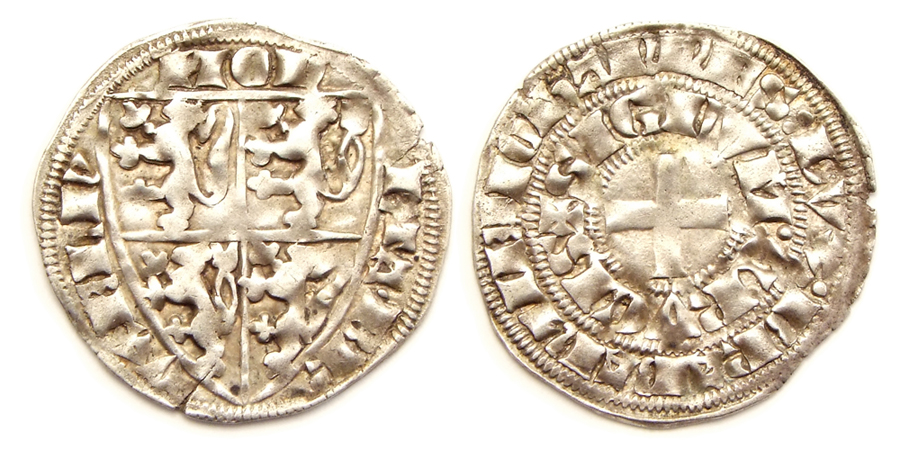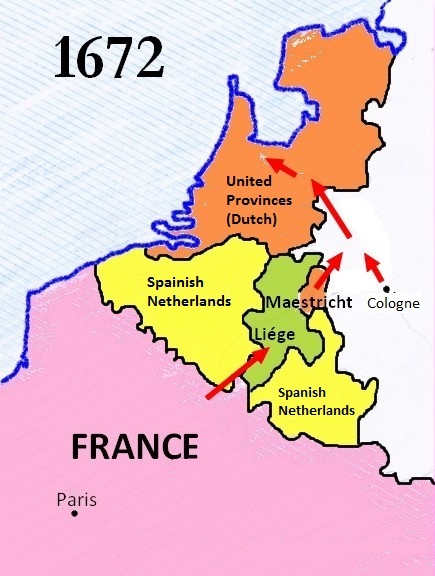|
Valkenburg Castle
Valkenburg Castle is a ruined castle in Valkenburg aan de Geul, Netherlands. It is unique in the Netherlands in that it is the only castle in the Netherlands built on a hill. The ruins suggest that the castle was once surrounded by a moat. The castle is listed in the top hundred of Dutch cultural monuments. History In the year 1115, fortifications were erected at the site by Gosewijn I, Lord of Valkenburg. This original wooden keep survived until 1122 when it was destroyed under siege by Henry V, Holy Roman Emperor. The castle was rebuilt in the following centuries but was again destroyed in a siege, this time by John III, Duke of Brabant. The current ruins are those of the castle destroyed in 1672. In 1937 during restorations of the castle it was discovered that there are secret passageways below the castle. These passages were used for knights during sieges. The Velvet Cave is a major attraction of the Valkenburg castle. The cave was hidden below Valkenburg castle. The cave w ... [...More Info...] [...Related Items...] OR: [Wikipedia] [Google] [Baidu] |
Valkenburg Aan De Geul
Valkenburg aan de Geul (; ) is a Municipalities of the Netherlands, municipality situated in the southeastern Dutch Provinces of the Netherlands, province of Limburg (Netherlands), Limburg. The name refers to the central town in the municipality, Valkenburg, and the small river Geul passing through it. History Sieges and conquests have been the recurrent theme in the history of Valkenburg, especially in connection with Valkenburg castle, seat of the counts of Valkenburg (or Falkenburg). In December 1672 the castle was once again destroyed by Dutch troops led by William III of England, William III, trying to prevent the armies of Louis XIV of France from capturing it, this time not to be rebuilt. In the 19th century, because of the natural environment of the area, Valkenburg became a holiday destination for the well-to-do in the Netherlands. Tourism developed, especially after in 1853 the railway from Maastricht to Heerlen and Aachen opened. Valkenburg railway station is the olde ... [...More Info...] [...Related Items...] OR: [Wikipedia] [Google] [Baidu] |
Netherlands
, Terminology of the Low Countries, informally Holland, is a country in Northwestern Europe, with Caribbean Netherlands, overseas territories in the Caribbean. It is the largest of the four constituent countries of the Kingdom of the Netherlands. The Netherlands consists of Provinces of the Netherlands, twelve provinces; it borders Germany to the east and Belgium to the south, with a North Sea coastline to the north and west. It shares Maritime boundary, maritime borders with the United Kingdom, Germany, and Belgium. The official language is Dutch language, Dutch, with West Frisian language, West Frisian as a secondary official language in the province of Friesland. Dutch, English_language, English, and Papiamento are official in the Caribbean Netherlands, Caribbean territories. The people who are from the Netherlands is often referred to as Dutch people, Dutch Ethnicity, Ethnicity group, not to be confused by the language. ''Netherlands'' literally means "lower countries" i ... [...More Info...] [...Related Items...] OR: [Wikipedia] [Google] [Baidu] |
Henry V, Holy Roman Emperor
Henry V (; probably 11 August 1081 or 1086 – 23 May 1125) was King of Germany (from 1099 to 1125) and Holy Roman Emperor (from 1111 to 1125), as the fourth and last ruler of the Salian dynasty. He was made co-ruler by his father, Henry IV, in 1098. In Emperor Henry IV's conflicts with the imperial princes and the struggle against the reform papacy during the Investiture Controversy, young Henry V allied himself with the opponents of his father. He forced Henry IV to abdicate on 31 December 1105 and ruled for five years in compliance with the imperial princes. He tried, unsuccessfully, to withdraw the regalia from the bishops. Then in order to at least preserve the previous right to invest, he captured Pope Paschal II and forced him to perform his imperial coronation in 1111. Once crowned emperor, Henry departed from joint rule with the princes and resorted to earlier Salian autocratic rule. After he had failed to increase control over the church, the princes in Saxony and o ... [...More Info...] [...Related Items...] OR: [Wikipedia] [Google] [Baidu] |
John III, Duke Of Brabant
John III (; 1300 – 5 December 1355) was Duke of Brabant, Duke of Lothier, Lothier (1312–1355) and List of rulers of Limburg, Limburg (1312–1347 then 1349–1355), the last Brabant male to rule them. Biography John was the son of John II, Duke of Brabant, and Margaret of England, Duchess of Brabant, Margaret of England. In 1312, he succeeded his father as the duke of Brabant, in no small part due to his father's Charter of Kortenberg. In an attempt to improve relations with France, John married Marie of Evreux. John and the towns of Brabant The early fourteenth century, a period of economic boom for Brabant, marks the rise of the duchy's towns, which depended on imports of English wool for their essential cloth industry. During John's minority, the major towns of Brabant had the authority to appoint councillors to direct a regency, under terms of the Charter of Kortenberg granted by his father in the year of his death (1312). The marital alignment with France was tested an ... [...More Info...] [...Related Items...] OR: [Wikipedia] [Google] [Baidu] |
Eighty Years' War
The Eighty Years' War or Dutch Revolt (; 1566/1568–1648) was an armed conflict in the Habsburg Netherlands between disparate groups of rebels and the Spanish Empire, Spanish government. The Origins of the Eighty Years' War, causes of the war included the Reformation, Centralised state, centralisation, excessive taxation, and the rights and privileges of the Dutch nobility and cities. After Eighty Years' War, 1566–1572, the initial stages, Philip II of Spain, the sovereign of the Netherlands, deployed Army of Flanders, his armies and Eighty Years' War, 1572–1576, regained control over most of the rebel-held territories. However, Spanish Fury, widespread mutinies in the Spanish army caused a general uprising. Under the leadership of the exiled William the Silent, the Catholic and Protestant-dominated provinces sought to establish religious peace while jointly opposing the king's regime with the Pacification of Ghent, but the Eighty Years' War, 1576–1579, general rebelli ... [...More Info...] [...Related Items...] OR: [Wikipedia] [Google] [Baidu] |
Slighted
Slighting is the deliberate damage of high-status buildings to reduce their value as military, administrative, or social structures. This destruction of property is sometimes extended to the contents of buildings and the surrounding landscape. It is a phenomenon with complex motivations and was often used as a tool of control. Slighting spanned cultures and periods, with especially well-known examples from the English Civil War in the 17th century. Meaning and use Slighting is the act of deliberately damaging a high-status building, especially a castle or fortification, which could include its contents and the surrounding area. The first recorded use of the word ''slighting'' to mean a form of destruction was in 1613. Castles are complex structures combining military, social, and administrative uses, and the decision to slight them took these various roles into account. The purpose of slighting was to reduce the value of the building, whether military, social, or administrative. ... [...More Info...] [...Related Items...] OR: [Wikipedia] [Google] [Baidu] |
Franco-Dutch War
The Franco-Dutch War, 1672 to 1678, was primarily fought by Kingdom of France, France and the Dutch Republic, with both sides backed at different times by a variety of allies. Related conflicts include the 1672 to 1674 Third Anglo-Dutch War and 1675 to 1679 Scanian War. In May 1672, France nearly overran the Netherlands, an event remembered in Dutch history as the ''Rampjaar'', or "Disaster Year". However, by late July the position had stabilised, while concern over French gains brought the Dutch support from Leopold I, Holy Roman Emperor, Emperor Leopold I, Habsburg Spain, Spain and Brandenburg-Prussia. Previously an ally of France, Kingdom of England, England Treaty of Westminster (1674), exited the war in February 1674. Now facing a war of attrition on several fronts, Louis XIV of France instead focused on strengthening French borders with the Spanish Netherlands and Rhineland, while a coalition led by William III of England, William of Orange sought to minimise any losses. ... [...More Info...] [...Related Items...] OR: [Wikipedia] [Google] [Baidu] |
William III Of England
William III (William Henry; ; 4 November 1650 – 8 March 1702), also known as William of Orange, was the sovereign Prince of Orange from birth, Stadtholder of County of Holland, Holland, County of Zeeland, Zeeland, Lordship of Utrecht, Utrecht, Guelders, and Lordship of Overijssel, Overijssel in the Dutch Republic from 1672, and List of English monarchs, King of England, Monarchy of Ireland, Ireland, and List of Scottish monarchs, Scotland from 1689 until his death in 1702. He ruled Great Britain and Ireland with his wife, Queen Mary II, and their joint reign is known as that of William and Mary. William was the only child of William II, Prince of Orange, and Mary, Princess Royal and Princess of Orange, Mary, Princess Royal, the daughter of King Charles I of England, Scotland, and Ireland. His father died a week before his birth, making William III the prince of Orange from birth. In 1677, he Cousin marriage, married his first cousin Mary, the elder daughter of his maternal u ... [...More Info...] [...Related Items...] OR: [Wikipedia] [Google] [Baidu] |
France
France, officially the French Republic, is a country located primarily in Western Europe. Overseas France, Its overseas regions and territories include French Guiana in South America, Saint Pierre and Miquelon in the Atlantic Ocean#North Atlantic, North Atlantic, the French West Indies, and List of islands of France, many islands in Oceania and the Indian Ocean, giving it Exclusive economic zone of France, one of the largest discontiguous exclusive economic zones in the world. Metropolitan France shares borders with Belgium and Luxembourg to the north; Germany to the northeast; Switzerland to the east; Italy and Monaco to the southeast; Andorra and Spain to the south; and a maritime border with the United Kingdom to the northwest. Its metropolitan area extends from the Rhine to the Atlantic Ocean and from the Mediterranean Sea to the English Channel and the North Sea. Its Regions of France, eighteen integral regions—five of which are overseas—span a combined area of and hav ... [...More Info...] [...Related Items...] OR: [Wikipedia] [Google] [Baidu] |
List Of Castles In The Netherlands
This is a list of castles in the Netherlands per province. Overview of castles in the Netherlands Drenthe See also '' List of havezates in Drenthe'' Flevoland Friesland See '' List of stins in Friesland'' Gelderland Groningen See '' List of borgs in Groningen (province)'' Limburg North Brabant North Holland Overijssel South Holland Utrecht See also '' List of manors in Utrecht'' Zeeland See also * List of castles * List of borgs in Groningen (province) * List of havezates in Drenthe * List of manors in Utrecht * List of stins in Friesland * List of castles and châteaux in Belgium *List of castles in France This is a list of castles in France, arranged by Regions of France, region and Departments of France, department. ;Notes: # The French word ''château'' has a wider meaning than the English ''castle'': it includes architectural entities that are p ... * List of castles in Germany * List of castles in Luxembourg References *Helsdingen, H.W. van, ''Gids ... [...More Info...] [...Related Items...] OR: [Wikipedia] [Google] [Baidu] |






